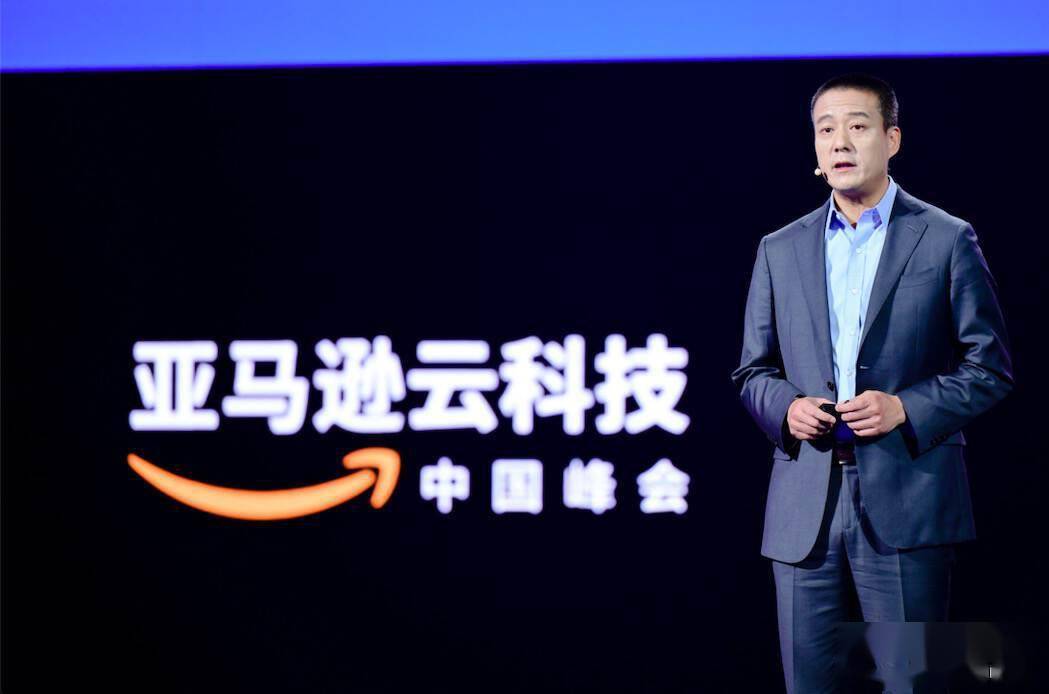With the development of the digital economy, "connection-online-data" will be the eternal theme of the digital society. The result of connectivity and online is the digitization of all human behavior and economic activities. Data is both the result of past human behavior and the basis for predicting future human behavior. Therefore, taxi-hailing companies will collect user travel data, music companies will collect data on users’ music listening habits, search engines will collect user search data, mobile payment manufacturers will collect user payment data, and so on.

The biggest difference between data and other resources is that it is non-competitive and can be copied and reused indefinitely. On the one hand, non-competitiveness means that data assets can bring more economic value to society than traditional competitive physical capital, but on the other hand, it also creates a large number of privacy issues. The data contains a large amount of users' sensitive information, which leads to ethical and legal risks when exchanging data. Therefore, in modern society, not to mention between companies, even different departments of the same company are extremely cautious when exchanging data. Cooperation between different companies on the premise of sharing data is often difficult to achieve. In the process of digital transformation, many enterprises have difficulty adapting to many laws and implementation standards related to data security, and they have no way to meet data security requirements.
Moreover, the value benefits of establishing data security are not obvious. In addition to avoiding fines and gaining customer trust, it is difficult to create value at the operational level, so data security will not be promoted hard, and There is no in-depth integration.
The fundamental reason is that many corporate legal internal control departments only design and control different processes and objects within the company in accordance with the law, but these only remain in the literal interpretation and satisfaction of legal provisions. However, when building an enterprise's IT technical team, tools or technical algorithms are only considered from a practical perspective. As a result, the legal and technical aspects are not integrated and two skins are running, making it impossible to carry out overall security management and control.
Traditionally, most companies have basically done security governance related content at the IT level, that is, they have built basic security facilities and established security organizations, and have also implemented corresponding security technologies for IT facilities and systems. Complete. However, in the process of digital transformation, what needs to be considered more is a user-centered security management system from a data and product perspective to meet the control and privacy requirements of laws and regulations related to data security.
In the process of enterprise digital transformation, data is faced with security risks from collection to extraction, conversion, loading, analysis, flow, etc., mainly in the following aspects:
1 , risks of data flow. Digital transformation has brought about the sharing and exchange of large amounts of data, between systems, between departments, between internal and external, and even between industries. While the flow of these data brings huge value, it also brings There are huge security risks, and enterprises will have increasingly weaker control over data in motion.
2. Data assets are unclear. The digital transformation of enterprises is accompanied by a large number of system applications and a large amount of data flowing in the network. Only by knowing what you have can you manage, classify and secure them. If even these are not clear, it is undoubtedly a very big safety hazard.
Once a security incident occurs, one of the challenges faced by enterprises is the difficulty of traceability and evidence collection. A swift investigation is needed to identify the leaker and the full extent of the incident. Doing so helps prevent similar incidents from happening again and establishes accountability and accountability.
4. Risk of user violation. In recent years, data breaches caused by internal users have emerged one after another, and according to the "2021 Data Breach Investigation Report" released by Verizon, 85% of data breaches are related to human factors. This all shows that internal threats have become the enemy that breaks through corporate security defenses.
How enterprises can effectively protect data security
1. Continuous risk assessment. From the perspective of data asset value, assess the access frequency and risks of different sensitive levels of data, data desensitization level risks, data transmission risks, data flow compliance risks and other aspects and scenarios, and output a risk assessment report based on the risk assessment results. .
2. Data discovery, classification and grading. Continuously restore files and sensitive fields from network traffic in an automated manner, and perform in-depth content scanning. At the same time, based on our built-in and customized rules, we automatically classify data and divide sensitivity levels. This enables users to clearly see the composition and type of data flowing in the network at any time.
3. Early warning, alarm, and traceability. By continuously collecting and processing network traffic, we can evaluate whether the event has abnormal behavior in the context and the extent of the abnormality, sort the importance of the event and its possible impact on the business, and provide pre-warning and mid-event alerts to high-risk users and entities. , traceability afterwards.
4. Continuous optimization and improvement. Data security governance is a long-term process, through automated data discovery, continuous updating and statistics of data assets; regular risk assessment, adapting to changes in business and environment, discovering potential risks and vulnerabilities; continuous monitoring and detection to ensure that no data is omitted and comprehensive Monitor various behaviors; early warning, alarm and traceability, handle and respond to security events efficiently and timely, and also provide a very valuable reference for defense strategies and system optimization. As this closed-loop process continues, data can be protected and used Good data.
5. Continuous monitoring and detection. 7×24 uninterrupted monitoring, with data as the core, discovering and identifying data, monitoring data flow process, detecting data sensitivity level, etc.; user monitoring and auditing, comprehensive monitoring of user behavior, account activity time, access business conditions, Data sensitivity level, etc., specific data operation behaviors, discover data risks and user violations.
What are the key points of data security solutions?
Data security solutions mainly include data identification (data classification and classification), data audit (including API level), data protection, data sharing, identity Authentication, encryption and other sub-directions. Commonly used technical methods in these sub-directions:
① Data recognition: natural language processing (NLP), image recognition, knowledge graph (KG), etc.
② Data audit: User abnormal behavior analysis (UEBA), full-link analysis.
③ Data protection: desensitization algorithm, watermark algorithm, network DLP, terminal DLP, privacy computing.
④ Identity authentication: IAM, zero trust, bastion host.
⑤ Encryption: transparent encryption, public key infrastructure PKI.
Commonly used technology selection:
① Data identification: active scanning of IP ports, word splitting and classification.
② Data audit: agent traffic analysis, network traffic analysis.
③ Data protection: desensitization (masking, replacement, encryption, hash, etc.), watermarking (pseudo rows, pseudo columns, spaces), network DLP (parsing SMTP, HTTP, FTP, SMB, etc.).
④ Identity authentication: temporary password, multi-factor authentication, etc.
⑤ Encryption: key management service, digital authentication service, password calculation service, timestamp service, hardware security service.
Core technical links:
① High-efficiency data classification and classification, predicate segmentation and semantic recognition technology.
② Full-link mapping and risk monitoring.
③ Homomorphic encryption, multi-party computation, federated learning, privacy intersection, etc.
The core challenge of data security:
Data is fluid, and the challenge is to solve the inherent contradiction between data flow and data security. This is completely different from the exposure convergence approach commonly used in network security.
The collection, transmission, storage, processing, exchange, and destruction defined in the DSMM maturity model are all involved. Data security governance prioritizes addressing security in data collection, data storage, and data processing scenarios.
Frontier trends in data security:
① The relationship between data classification and data lineage.
② There are two difficulties in full-link data analysis: how to correlate and analyze information at the three levels of terminal, application, and data assets; how to map data flow and discover risks from data flow.
③ Privacy computing. It refers to a collection of technologies that realize data analysis and calculation on the premise of protecting the data itself from external leakage, achieving the purpose of making data "available and invisible", and realizing the transformation and release of data value.
The above is the detailed content of Data security solutions in digital transformation. For more information, please follow other related articles on the PHP Chinese website!
 AI人工智能如何助推数字化转型?Apr 12, 2024 pm 02:31 PM
AI人工智能如何助推数字化转型?Apr 12, 2024 pm 02:31 PM人工智能从提出到现在已经有几十年的时间,而为什么只在近些年,该技术才获得爆发式增长? 这一现象绝非偶然,正是得益于云计算、物联网和大数据等数字技术的日趋成熟,人工智能才取得实质性进展:云计算为人工智能提供了开放平台,物联网确保数据的实时分享,而大数据则为深度学习提供无限资源及算法的支持。传统企业数字化转型与这些领域技术的融合推动了人工智能技术不断升级,为实现其由“智能感知”向“智能思考”与“智能决策”的演进打下了坚实的基础。企业数字化创新能力较强对于市场与消费者的影响力日益增大。任何执行数字化转
 肯睿Cloudera宣布新任大中华区副总裁Apr 09, 2024 pm 03:07 PM
肯睿Cloudera宣布新任大中华区副总裁Apr 09, 2024 pm 03:07 PM中国北京,2024年4月9日——企业大数据和人工智能平台公司肯睿Cloudera今日宣布任命新任大中华区副总裁。此举旨在进一步聚焦客户成功及业务转型,并通过提供混合多云大数据和大模型能力,助力企业适应大数据和人工智能应用的发展,加速数字化转型进程。肯睿Cloudera现任命刘汨春先生为大中华区副总裁(RVP),他将负责推动肯睿Cloudera在中国的进一步拓展,并主导战略性销售、渠道发展和本地化策略方向。肯睿Cloudera大中华区副总裁刘汨春此次新任高管的任命进一步彰显了肯睿Cloudera致
 集成AI和ML 以很大限度地提高运营效率的好处Apr 10, 2023 am 08:01 AM
集成AI和ML 以很大限度地提高运营效率的好处Apr 10, 2023 am 08:01 AM从预测COVID-19死亡率到内容个性化,AI和ML正在为全球各地的组织扩大可能性。因此,越来越多的企业正在增加对人工智能的投资。在各个领域中,人类团队都在与高性能的人工智能团队争夺客户关注和销售。这根本不是一场公平的战斗。AI可以充当数字同事,接管日常工作,为运营团队提供更深入的见解,并更好地协调客户关系,以实现运营效率的最大化。团队可以与AI合作,而不是与之对抗。以下是一些组织通过将AI和ML集成到其运营中可以获得的一些好处。革新合同生命周期管理(CLM)虽然CLM主要是供法律团队解决合同
 四条路径实现AI赋能中小企业数字化转型Apr 08, 2023 pm 03:31 PM
四条路径实现AI赋能中小企业数字化转型Apr 08, 2023 pm 03:31 PM中小企业相比于大企业可能不会有太强大的技术支持以及强大的资金支持,缺乏技术人员、缺乏高质量数据、应用场景不明确、投资成本高……这都是中小企业数字化转型的难点。特别是中小企业本就缺资金,难以承担研发成本或技术定制成本。那么AI该如何去赋能中小企业呢?笔者认为,人工智能技术将通过产业升级、管理变革、流程再造、环境优化四条路径加速中小企业数字化转型进程。路径一人工智能改变商业惯例,推动相关行业创新人工智能技术能够带动产业结构升级换代,催生新业务、新模式和新技术,改变企业的商业惯例,助力零售、运输、旅游
 如何使用Vue保护数据安全性Jun 11, 2023 am 10:11 AM
如何使用Vue保护数据安全性Jun 11, 2023 am 10:11 AM随着互联网的普及和应用程序的开发,数据安全性变得越来越重要。Vue作为一种流行的JavaScript框架,可以帮助开发人员保护数据的安全性。在本文中,将介绍一些使用Vue保护数据安全性的技术和建议。1.使用VuexVuex是一种Vue.js的状态管理模式。使用Vuex,您可以通过将状态(数据)存储在中央存储库中来实现应用程序的数据安全性。因此,您可以通过各种
 网络安全行业可以从“马斯克算法”中汲取灵感Nov 03, 2023 pm 05:13 PM
网络安全行业可以从“马斯克算法”中汲取灵感Nov 03, 2023 pm 05:13 PM今天,我们已经进入了一个由人工智能和数字化转型驱动的颠覆性创新时代。在这个时代中,网络安全不再只是企业IT的“成本和摩擦”,相反,它成为了构建下一代数字基础设施和信息秩序的关键支点,也是所有科技创新(从药品研发到军工智造)的必要要素。这意味着传统的网络安全技术研发、方案实施、防御体系设计和运营都需要经历方法和理念上的革命,敏捷化和智能化已经成为网络安全进化的两个主要主题简而言之,网络安全需要一次马斯克式的“出圈”革命。从电动车到火箭再到星链甚至Twitter(X),马斯克向我们展示了如何用“第一
 如何使用PHP表单中的过滤器和验证器确保数据安全Jun 24, 2023 pm 12:01 PM
如何使用PHP表单中的过滤器和验证器确保数据安全Jun 24, 2023 pm 12:01 PM随着互联网的不断发展,网站和应用程序的数量与日俱增,而安全问题也愈加引人注目。在网站和应用程序中,数据过滤和验证非常重要,因为任何可编辑的内容都是容易受到攻击的目标。而PHP表单中的过滤器和验证器可以帮助我们确保数据的安全。数据过滤器的作用PHP数据过滤器用于自动或手动地过滤用户输入数据。该过滤器将输入数据中的标签、空格和特殊字符转换为实体,以防止浏览器将其
 生成式AI爆发,亚马逊云科技持续专注创新,助力企业数字化转型Jul 13, 2023 pm 08:54 PM
生成式AI爆发,亚马逊云科技持续专注创新,助力企业数字化转型Jul 13, 2023 pm 08:54 PM2023年的科技圈什么技术最火,毫无疑问,回答都会指向生成式AI。生成式AI的到来引发了业内外广泛讨论,也引发了大家对AI发展的新一轮思考——未来几年,生成式AI会成为最重要的生产力工具,无论是训练还是推理端,算力需求都将有望爆发式增长。在6月28日举行的2023年亚马逊云科技中国峰会上,亚马逊云科技大中华区产品部总经理陈晓建发表了名为《专注创新,摆脱基础架构束缚》的主题演讲,他认为,“当前,虽然生成式AI只有短短几个月,但其超大规模人工智能模型和海量数据对高算力提出新要求,不断拉动算力需求快速


Hot AI Tools

Undresser.AI Undress
AI-powered app for creating realistic nude photos

AI Clothes Remover
Online AI tool for removing clothes from photos.

Undress AI Tool
Undress images for free

Clothoff.io
AI clothes remover

AI Hentai Generator
Generate AI Hentai for free.

Hot Article

Hot Tools

mPDF
mPDF is a PHP library that can generate PDF files from UTF-8 encoded HTML. The original author, Ian Back, wrote mPDF to output PDF files "on the fly" from his website and handle different languages. It is slower than original scripts like HTML2FPDF and produces larger files when using Unicode fonts, but supports CSS styles etc. and has a lot of enhancements. Supports almost all languages, including RTL (Arabic and Hebrew) and CJK (Chinese, Japanese and Korean). Supports nested block-level elements (such as P, DIV),

MantisBT
Mantis is an easy-to-deploy web-based defect tracking tool designed to aid in product defect tracking. It requires PHP, MySQL and a web server. Check out our demo and hosting services.

SAP NetWeaver Server Adapter for Eclipse
Integrate Eclipse with SAP NetWeaver application server.

Atom editor mac version download
The most popular open source editor

MinGW - Minimalist GNU for Windows
This project is in the process of being migrated to osdn.net/projects/mingw, you can continue to follow us there. MinGW: A native Windows port of the GNU Compiler Collection (GCC), freely distributable import libraries and header files for building native Windows applications; includes extensions to the MSVC runtime to support C99 functionality. All MinGW software can run on 64-bit Windows platforms.







